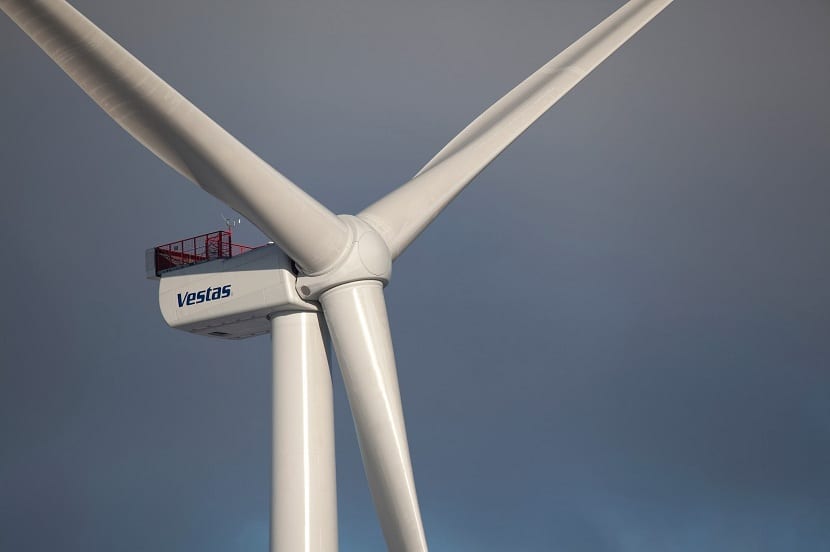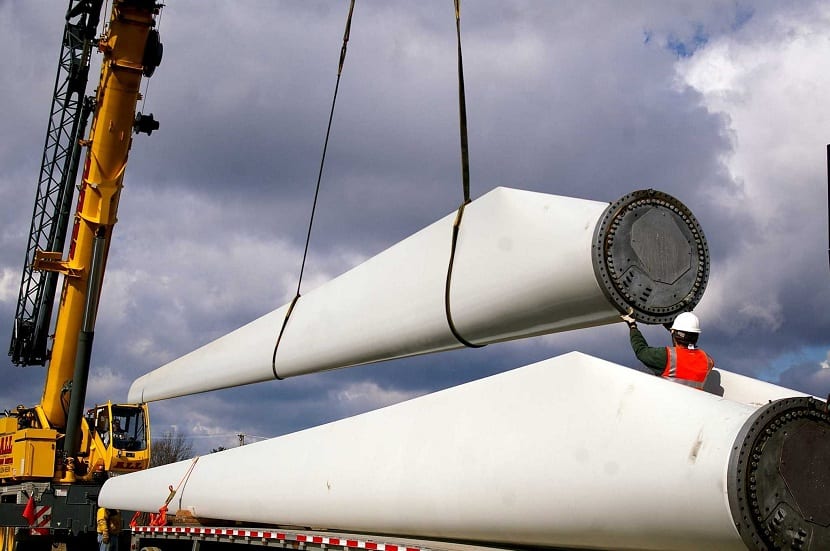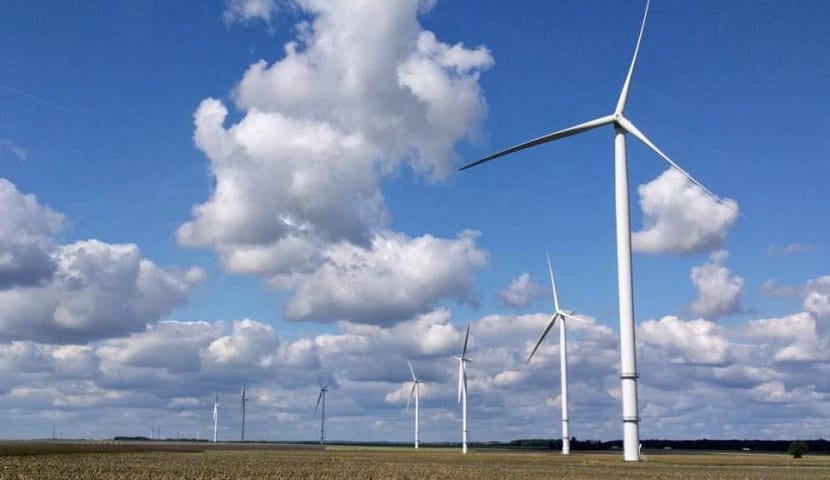
In the world of renewable energies, solar and wind power undoubtedly stand out. The first consists of elements called solar panels that are capable of capturing the sun's radiation and transforming it into electrical energy. The second uses so-called wind turbines to transform the energy that the wind has into electricity.
Wind turbines are very complex devices that need a prior study to be profitable and efficient. In addition, there are several types of wind turbines and wind power. Do you want to know everything related to wind turbines?
Characteristics of a wind turbine
As mentioned before, the wind turbine is a device capable of converting the kinetic energy of the wind into electrical energy. It does this through the use of blades that rotate between 13 and 20 revolutions per minute. The revolutions at which blades can rotate depends a lot on the type of technology used in their construction and the force that the wind carries at that moment. Typically, blades that are constructed of lighter materials are capable of turning more times per minute.
As the blades acquire more speed, greater amount of electrical energy is capable of generating and therefore its efficiency is higher. For the wind turbine to start up, auxiliary energy is needed that is supplied to start its movement. Then, once started, it is the wind that is responsible for moving the blades.
Wind turbines have a half-life greater than 25 years. Although its installation costs and its previous investment are high, as it has a fairly long useful life, it can be perfectly amortized and obtain economic benefits, while reducing the impacts on the environment and the emissions of greenhouse gases produced by the fossil fuels.
As technology increases, the evolution of the wind turbine allows it to have a longer useful life, as well as being able to generate more electrical energy and being able to locate itself in more optimal places.
Operation
The wind turbine is said to be capable of transforming the kinetic energy of the wind into electrical energy. However, how is it capable of generating that energy? The wind turbine is capable of producing electricity in different phases.
- Automatic orientation. This is the first phase in which the wind turbine begins to operate. It is able to orient itself automatically to take full advantage of the energy provided by the wind. This is known thanks to the data that is recorded by the wind vane and the anemometer that they have incorporated in their upper part. They also have a platform that rotates on the crown at the end of the tower.
- Blade turn. The wind begins to turn the blades. In order for this to occur, its speed has to be around 3,5 m / s. The maximum power necessary for the optimization of electricity generation occurs when the wind has a speed of 11 m / s. If the wind gusts are greater than 25 m / s, the blades are placed in the shape of a flag so that the wind turbine brakes, thus avoiding excessive stresses.
- Multiplication. It is a rotor that turns a slow shaft that is capable of raising the turning speed from about 13 revolutions per minute to 1.500.
- Generation. Thanks to this multiplier that increases the revolutions per minute, its energy can be transferred to the generator that they have coupled, thus producing electricity.
- Evacuation. The electrical energy generated is conducted inside the tower to the base. Once it has been driven there, it goes to the underground line to the substation where its voltage rises enough to inject it into the electrical network and distribute it to the rest of the consumption points.
- Monitoring. For the rest of the energy production phases to be carried out correctly, a monitoring and surveillance process is continuously needed. The critical functions of the wind turbine are monitored and supervised from the substation and the control center. Thanks to this, any incident in the operation of the wind farm can be detected and resolved.
Types of wind turbines
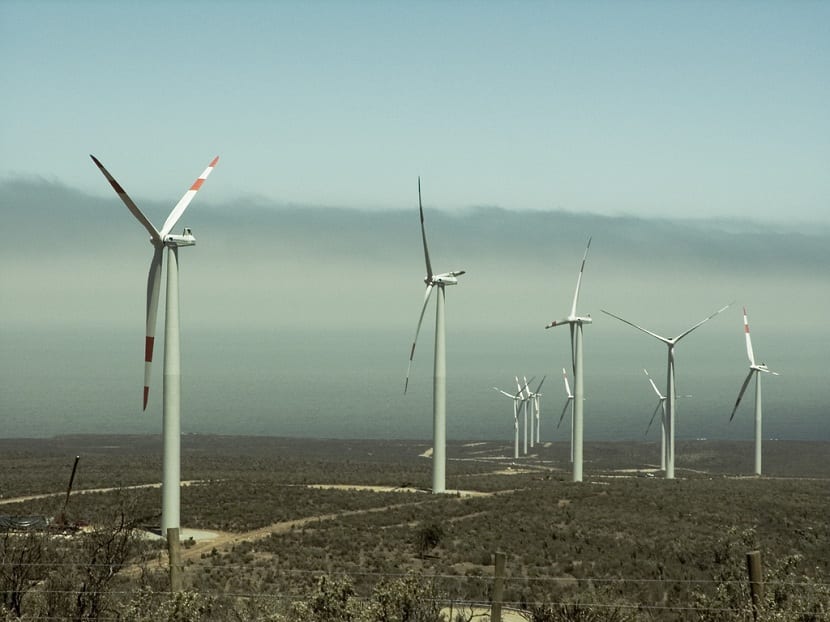
There are two types of wind turbines depending on their use and energy generation. The former depend on the axis of the rotor (vertical or horizontal) and the latter on the power supplied.
According to the rotor axis
Vertical axis
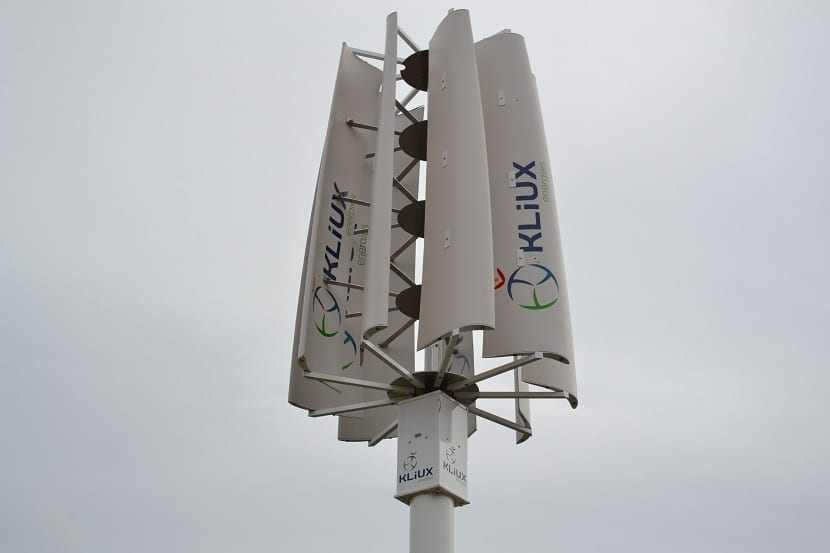
The main advantages of this type of wind turbine is that do not need the automatic orientation phase being omni-directional. In addition, its components such as the generator and multiplier are installed flush with the ground, which leads to a significant improvement in maintenance conditions and a reduction in assembly costs.
In the disadvantages we find that they have lower efficiencies compared to other types and its need for external systems that act as a starter for the blades. In addition, when the rotor needs to be disassembled for maintenance, all the machinery of the wind turbine must be disassembled.
Horizontal axis
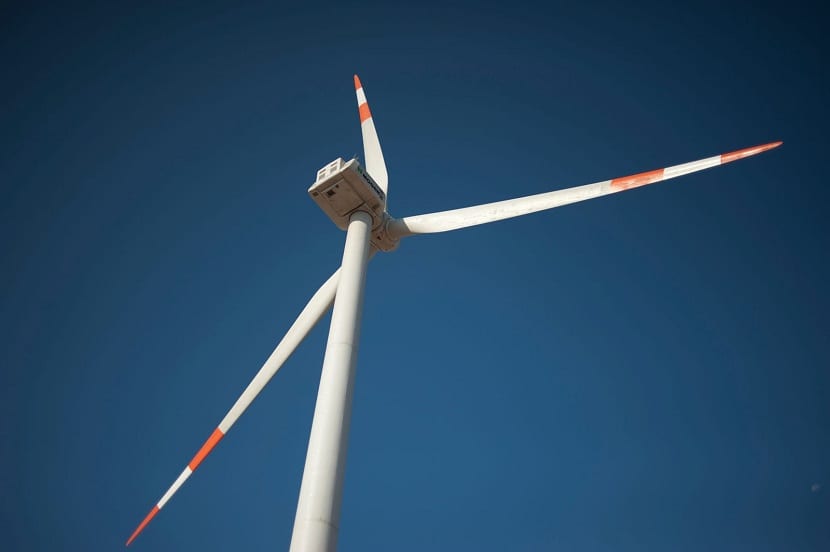
Most of the wind turbines that are built to connect them to the electrical network are three-bladed and with a horizontal axis. These wind turbines have greater efficiency and achieve higher rotational speeds per minute. This means that you need less multiplication. In addition, thanks to its high construction, it is able to take better advantage of the force of the wind at height.
According to the power supplied

Depending on the power they supply, there are several types of wind turbines. The first are low-power equipment. They are associated with the use of mechanical energy, such as for pumping water, and they are capable of providing power around 50Kw. Some types of equipment can also be used to increase the total power supplied. Today they are used as a power source for mechanical systems or isolated power supplies.
Medium power equipment. These are the seconds and are in a production range of about 150Kw. They are not usually connected to batteries, but are on the electrical network.
Lastly, high-power equipment is used for commercial electrical energy production and is connected to the grid and in groups. Its production reaches gigawatts.
With this information you can learn much more about wind turbines and their operation.
